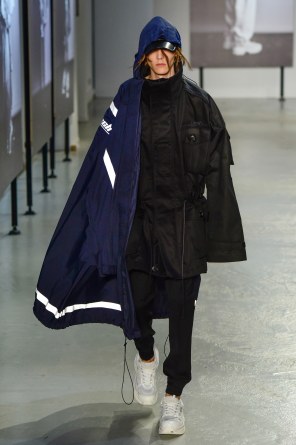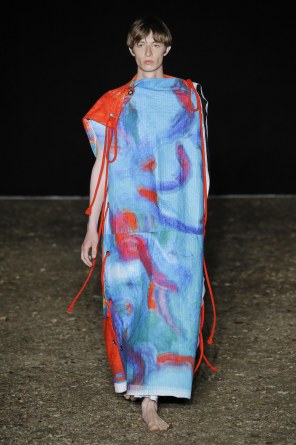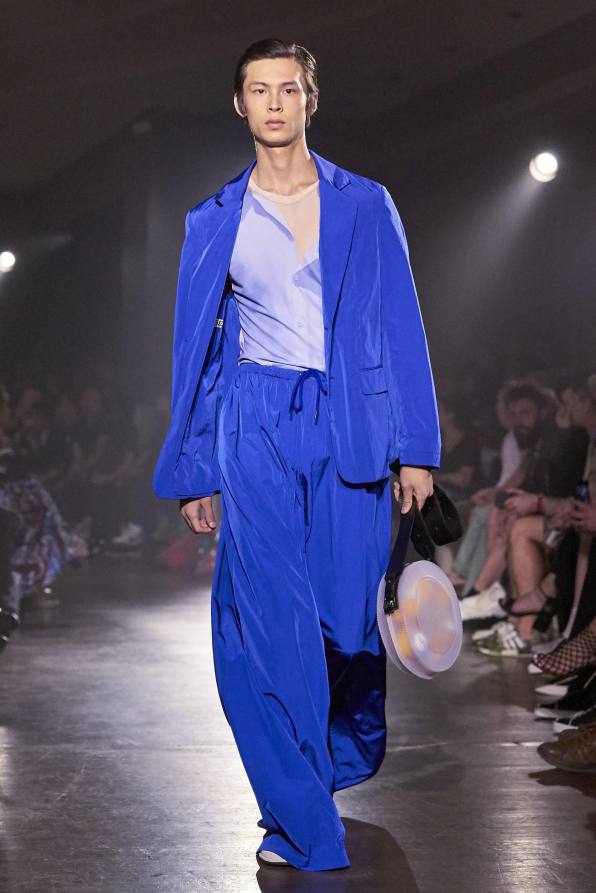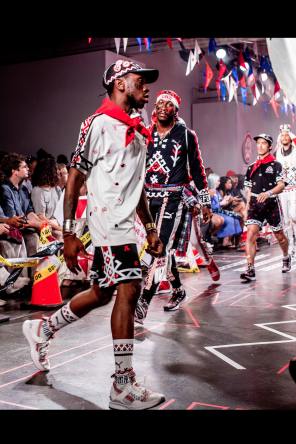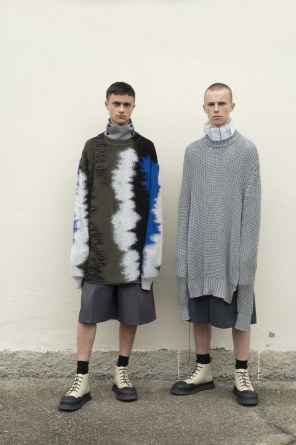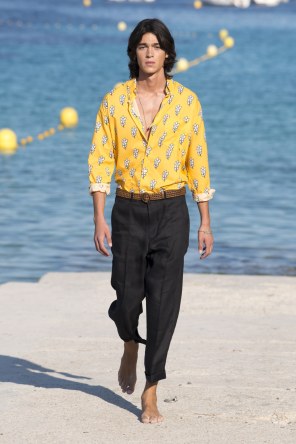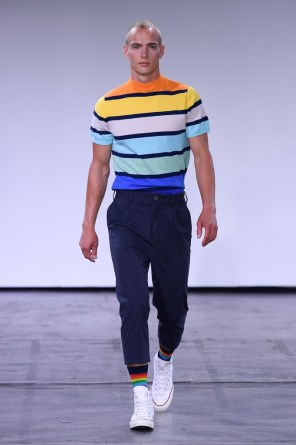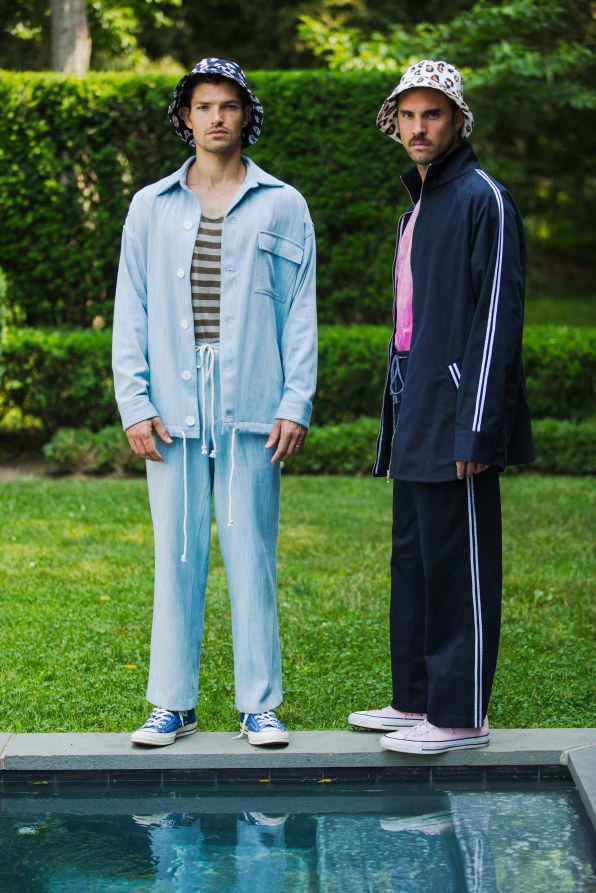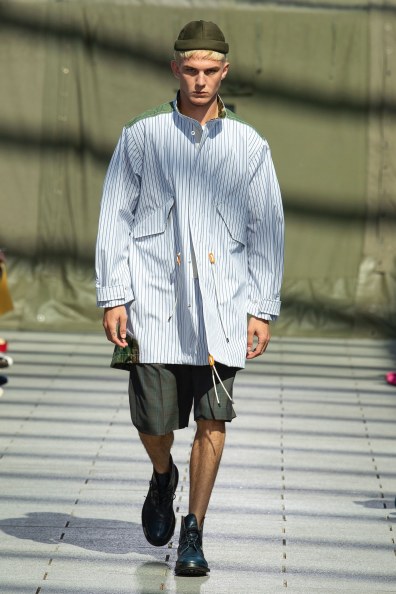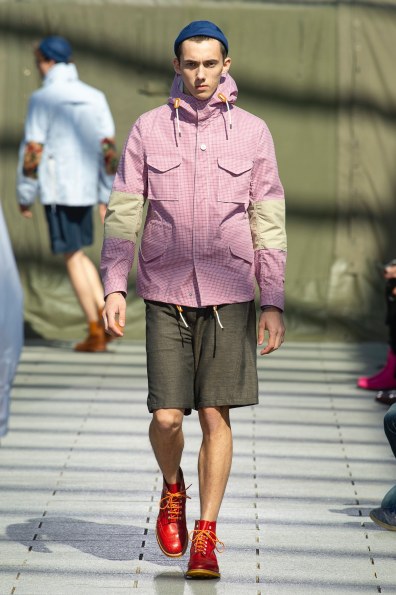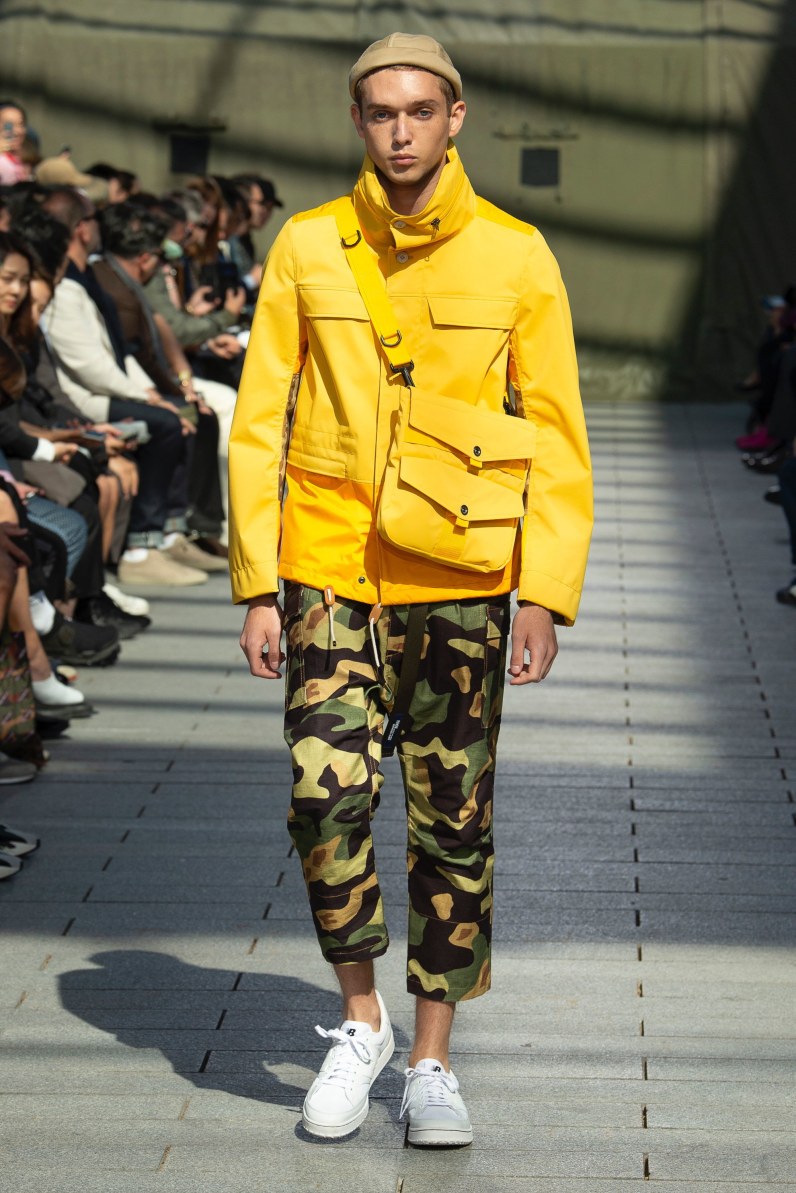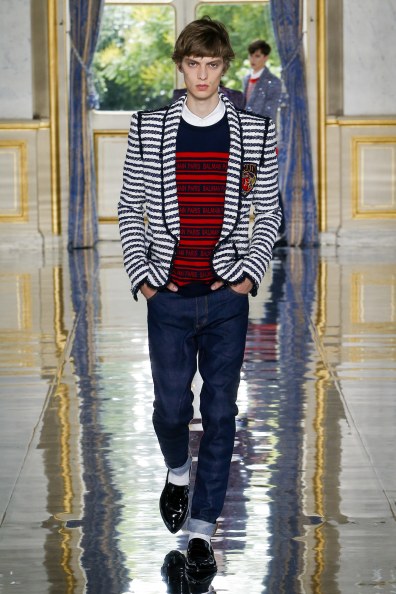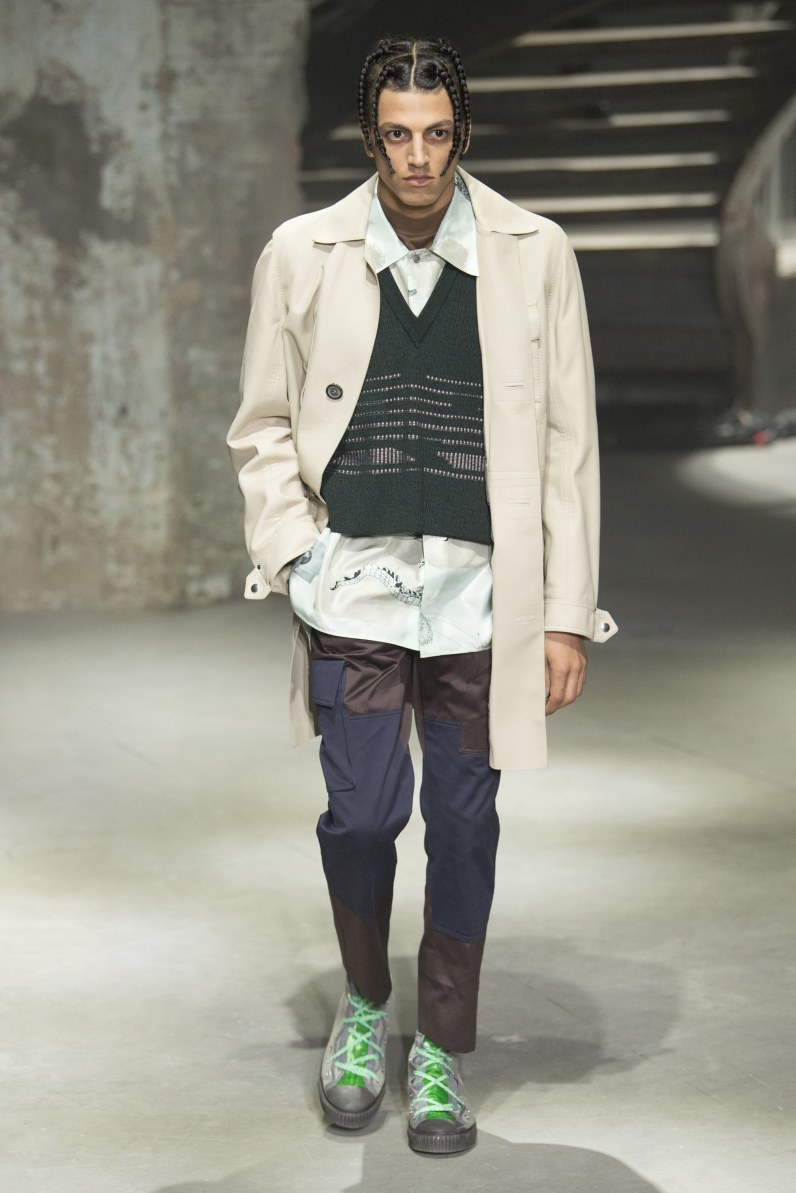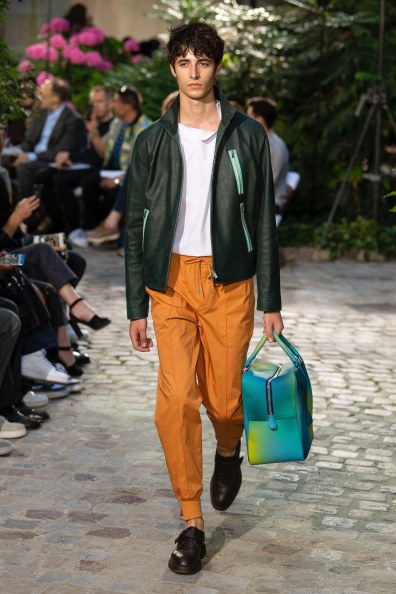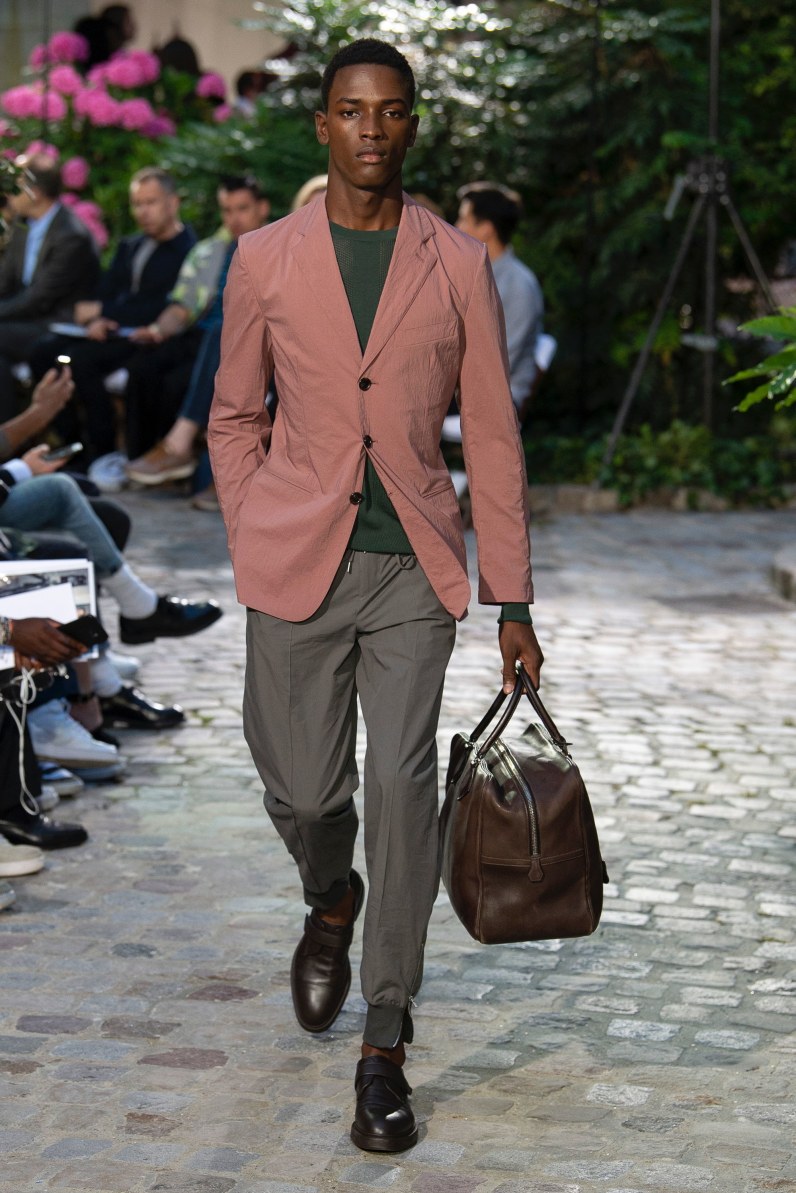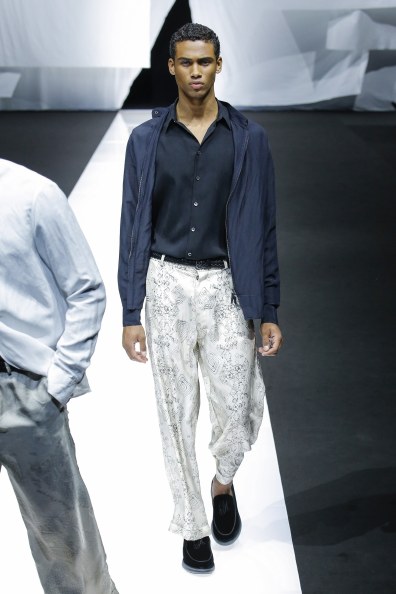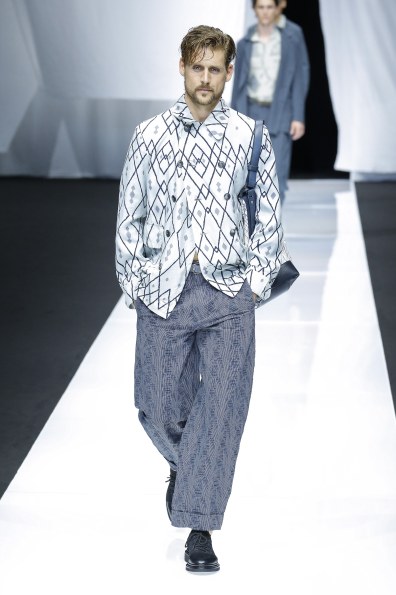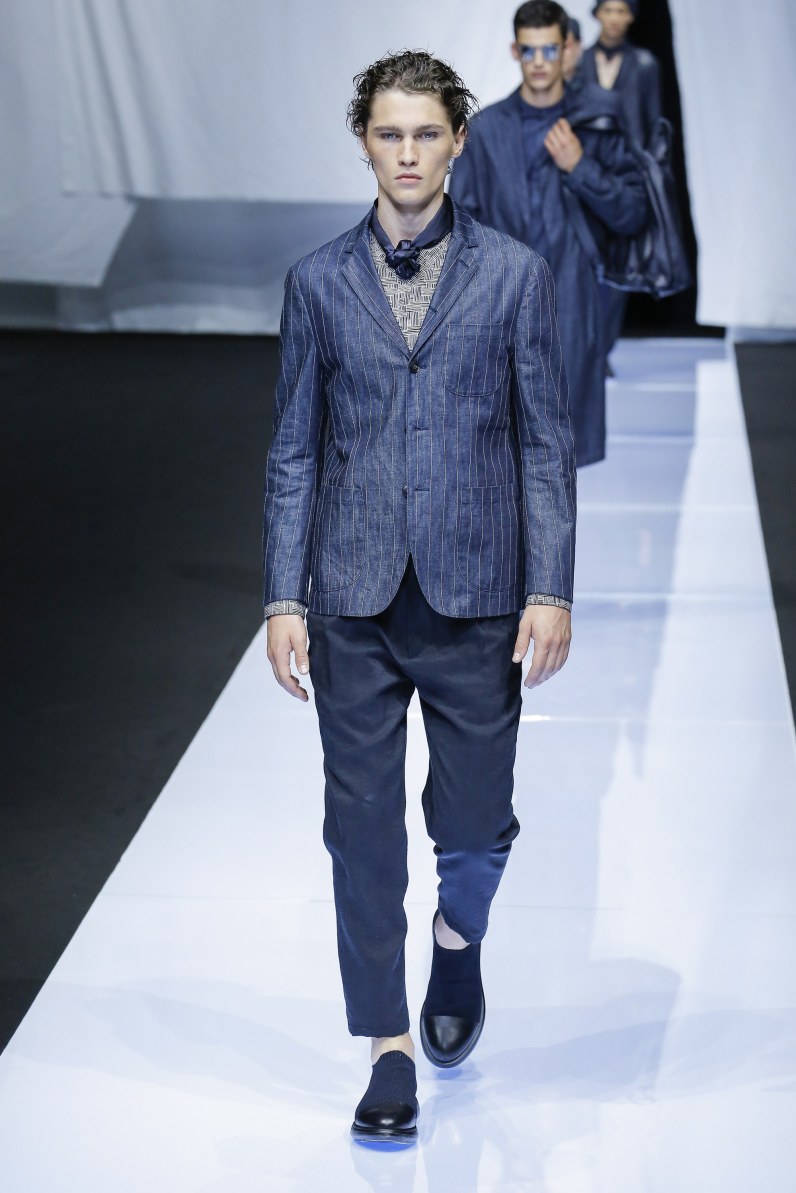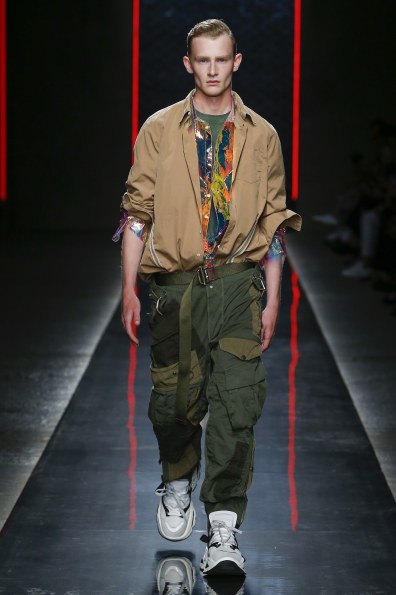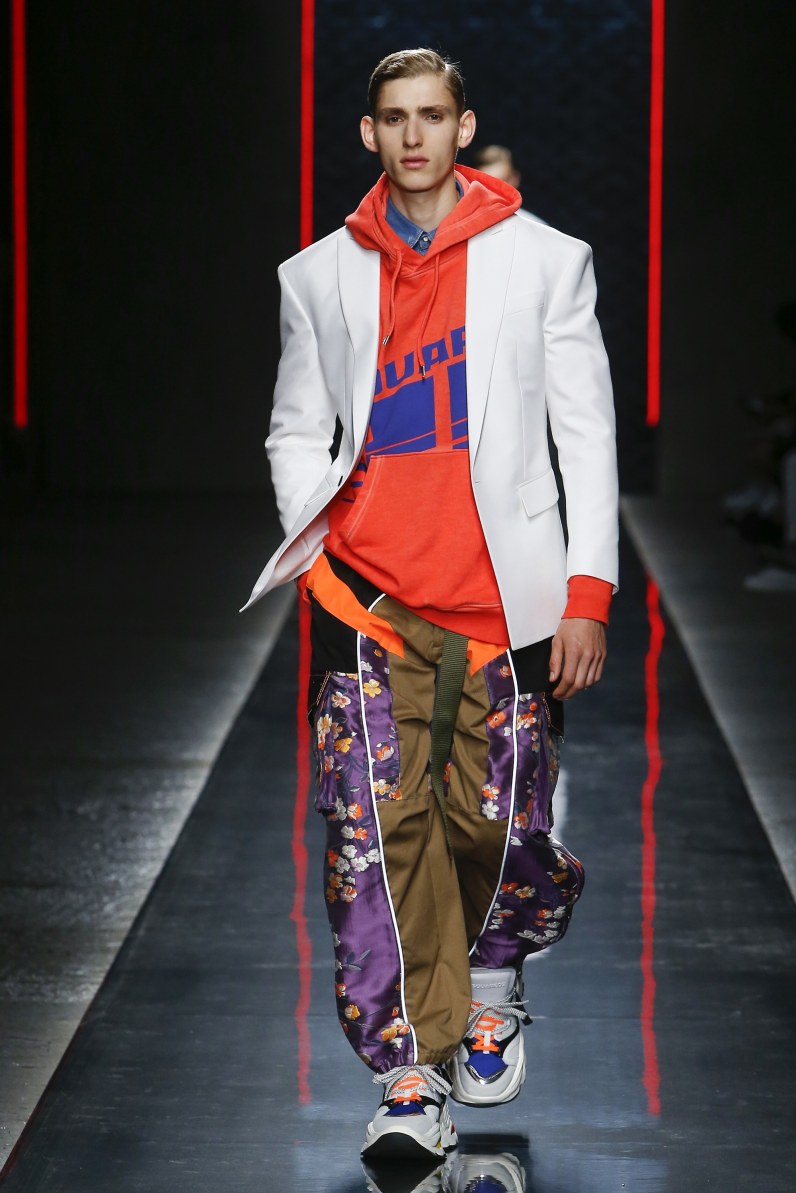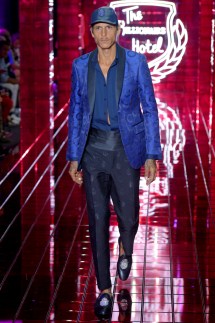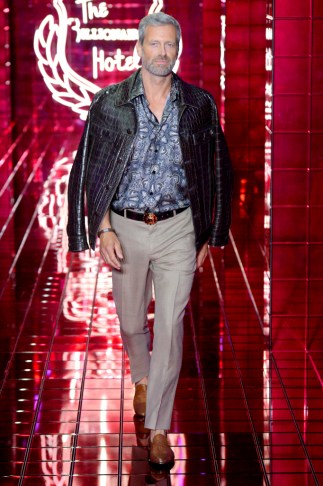TO BE OR NOT TO BE? That was the question thrown up in the spring/summer season of menswear fashion weeks across Europe and in New York. Should menswear be more sensible and market-friendly, or should it take the womenswear direction and be conceptual? Is mens fashion art, or is it clothing? Is the runway leading the street, or is the street leading the runway?
Usual suspects Craig Green and Rick Owens presented the esoteric experiments with deconstruction/constructivism they are known for, stretching form, silhouettes, and practicality. Juun J., Yohji Yamamoto, and Kenzo (in order of wearability) followed in that vein, cementing a sort of Asian counter-aesthetic that favors oversized, cartoonish outlines. Belaboring an already boggling array of post-post-modernist collections were the breathless dissertations from runway critics to explain the phenomena and proclaiming it avant-garde.
On the other extreme we have designers who took the “market” route. Some took it to the extreme, presenting basically sportswear/beachwear lines on the runway (see: Thaddeus O’Neill, Parke and Ronen, Jacquemus). Many others embraced the popular “street” look – loosely defined as a mix of sportswear and Hypebeast-approved streetwear. Jil Sander is a good example, painting a collection of elongated hems and boxy but structural tops in a monochromatic black, gray, and navy. Jahnkoy, on the other hand, celebrated multiculturalism by way of slapping Cyrillic characters and traditional Caucasian patterns on Puma jumpers and track pants, mixing successfully the tribal Siberian and street-Brooklyn identities of runway-virgin Maria Kazakova.
I’m assuming the important question most people have is: what seems to be the “in-thing” now, and what can I wear to look like I know fashion fairly well? That’s pretty straightforward, and we look to seasoned hands for direction.
Military themes remain a fecund source of inspiration for the designers this year, as do the vernaculars of prep and varsity styling. Beyond that, other recognizable sources include the romantic riviera and athleisure. Layering was a near-obsession, forgivable for runway shows where designers wish to show all they’ve got. Patterning and print were everywhere – colorful, loud, even heady.
Junya Watanabe, a mainstay now in Paris, opened Friday’s show with a vivid palate of sky blue, red candy stripes, and saturated yellow. Unlike most of his Asian counterparts, he eschewed exaggeration in favor of masterful layering, putting army pouches over pockets, pockets over vests and hoodies, and those over cropped office wear and camo pants. His men are masculine but humorous, street but spiffy.
Alexander McQueen, with Sarah Burton of Kate Middleton’s wedding dress fame at the helm, brought on its signature dark/light dynamic albeit more subtly. There was still an edge of rebellion: the focus was on close, flattering tailoring, the layers were straightforward, the shoes uniformly black Chelsea boots. Not street, not oversized, not au courant. Even within the collection Sarah Burton rebelled, splashing pastel watercolors and brush strokes in all-over designs.
Balmain’s social media darling Olivier Rousteing brought his A-game once again, departing from elaborate crocheting, and instead flaunting with a carefree attitude his dual French-American identity. Red, white, and blue (or the Tricolore) featured strongly in his SS19 collection, the latter often appearing as light, casual denim. Trench coats for Parisian squalls, Breton stripes galore, Chanel boucle jackets for men, varsity and prep accents, nods to Michael Jackson’s Bad with white socks on black loafers – it’s a fun, winsome collection.
On the other hand, Lanvin’s Lucas Ossendrijver, another tastemaker of contemporary menswear didn’t quite hit the mark with his “not casual, not formal” approach. Most of the looks screamed for pruning. Layers neither complemented nor clashed with one another. Loose fabric moved, but did not excite. Glimpses of the “new language” he attempted to establish for menswear came through in the simpler looks (24, 29, 36, and his own outfit for the show).
Why change that much, anyway? Véronique Nichanian’s approach for Hermès, as it always has been, was undeniably French, unmistakably menswear, irrefutably high-end. Her palette was plucked directly from Nature – peat, luxuriant green, bee yellow, gerbera orange, dusty peony pink, shades of sky blue, all saturated and deep.
The tailoring is handsome, part-Riviera, part-Le Marais. As the palette began to blanch towards the end of the series, Nichanian’s skill of juxtaposing the male body’s frame with the structure of fabric really shone through. A cardigan worn sans chemise, cut to a tee, bore no stiffness, looking relaxed and beach-ready instead. A boat-neck, slouch-shoulder knit sweater over tailored snakeskin-patterned joggers and black leather sandals made for dreamy yacht-wear: comfy, but smart. Sure, there were looser silhouettes, but they were always complementary, never ironically (and annoyingly) self-effacing.
If someone did the baggy thing right, it was Giorgio Armani. All but four of his looks had pants instead of shorts (cold summer, perhaps?), and each had a degree of “looseness”. None of them seemed excessive or auteur though; it’s a testament to Armani’s acute sense of what the market can take, or perhaps it’s thanks to the well-built frames of his models. The Armani man suffered no emasculation from the runway’s fleeting fancies – they were virile, hunky, each ready to grace an Acqua di Gio ad.
The twins at DSQUARED2 made layering great again. The women’s looks took the cake however, their energetic structure reminiscent of Balmain’s previous woven looks. The men sported military motifs in roomy triple-decker bombers, flowing cargo pants, and utility pockets. Layering also applied to color-blocking, expressed in form-flattering stripes that called to mind an airfield or flight tags. Styling, tailoring, theme, and color come together beautifully.
Special mention: Billionaire. It’s easy to forget that menswear is for men – all types, all ages. Bringing on mostly silver foxes, the brand had easily the most fun on the runway (until Jahnkoy had a freestyling dance-off on the runway in NYC). Tailored shorts revealed badass ink and mid-shin socks over oxfords. There were dizzying doses of electric color and glossy patterns on suits cut slim, neon lights and bodyguards tailing the amateur models, who occasionally carried crocodile-skin valises. More is more here, and that applies also to age.
Take away what you will from this review. Fashion, as we know, is cyclical. The styles go and return, maybe in different iterations and fabrics and colors, but always recognizable. Some say this is why we must break the cycle and sublimate the art, go in absurdist, reflexive directions to rethink fashion as art, or architecture, or social psychology. That may have value, but I suspect most people think clothes are meant to be worn, to make you look better than you ever thought possible. Good news – that’s still going on in the menswear industry for the most part, and not about to disappear any time soon.




